D Der heutige Post dient dazu, einen Mythos aus dem Weg zu räumen. Den Mythos, dass man nur im Manuellen Modus der Kamera tolle Fotos machen kann. "Die Profis fotografieren immer nur manuell.", auch wenn ich kein Profi bin, möchte ich diesen Satz als Lüge abstempeln.
Stellt euch vor, euch läuft das perfekte Motiv über den Weg: ein wildes Tier, ein schöner Vogel, eine tolle Libelle, und ihr müsst erst mal Blende und Belichtung anpassen. Ich wette mit euch: bis ihr die perfekten Einstellungen habt, ist das Motiv schon über alle Berge.
Ich gebe zu, auf diesem Blog sind nur die wenigsten Bilder im manuellen Modus geschossen und ich stehe dazu.
E In today's post I want to eliminate a photography myth. The myth, that you can only make nice pictures in Manual Mode of your camera. "Professionals always use the Manual Mode", even if I'm not a professional, I want to tell you, that this sentence is a lie.
Imagine the perfect theme is walking right in front of you: a wild animal, a nice bird, a beautiful dragonfly, and you first have to set exposure time and aperture. I bet: once you have the right settings, your theme is long gone.
I admit that the least pictures on this blog are made in Manual Mode and I stand for that.
D Wann benutze ich die Programmautomatik (P)?
Wenn ich mit der Kamera in der Tasche unterwegs bin, steht diese immer auf P, meistens auch gleich mit passender ISO. Die ISO ist - behaupte ich - die am schnellsten und einfachsten zu bestimmende Komponente. Kurz gesagt: kleine ISO = es ist gerade hell, große ISO = es ist dunkel, Ende. Wenn nun also ein wildes Reh über den Weg läuft, muss ich nur noch die Kamera zücken, einschalten und ein Foto machen. Viel schneller ist das wohl kaum möglich.
E When do I use Program Mode (P)?
When I take my camera with me, it's always on P and usually with the suitable ISO. I claim that ISO is the easiest and fastest setting to decide. Briefly: if it's bright, use a small ISO and if it's dark, use a big one. So now if there's a deer on your way, just whip out the camera, turn it on and take a photo. I think that's pretty fast like that and you can take nice pictures.
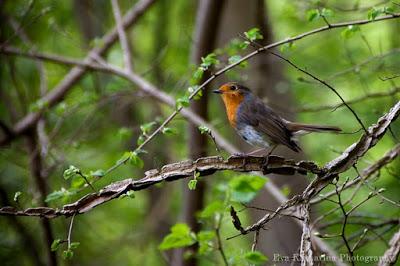
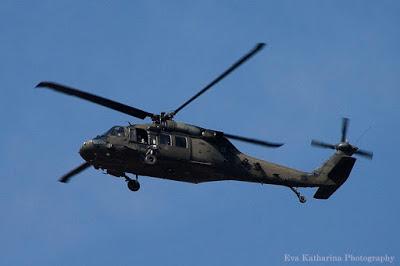
D Wann benutze ich die Blendenautomatik (TV)?
Hier werden Belichtungszeit und ISO bestimmt und die Kamera bestimmt die Blende. Kurz zu merken: TV steht für Time Value, also den eingegebenen Verschlusszeitwert.
Diese Einstellung nutze ich wenn ich Bewegungen einfrieren oder verwischen will. Also beispielsweise bei der Sportfotografie oder wenn man ein Tier fotografieren will.
Außerdem benutze ich die Einstellung gelegentlich, wenn ich kein Stativ dabei habe und etwas Freihand fotografieren will. Da gibt es ja die schöne Faustregel mit Brennweite und Verschlusszeit. Fotografiere ich mit 200mm Brennweite, darf die Verschlusszeit höchstens 1/200 sein, ansonsten kommt es zu Verwacklungen. Also immer schön die Brennweite hinter den Bruchstrich stellen.
E When do I use Shutter Priority Mode (TV)?
In this mode you choose exposure time and ISO and the camera determines the aperture. Easy to remember: TV stands for Time Value, so you have to give the camera a value for the exposure time.
I use this mode, when I want to freeze or blur movements, e.g. when I photograph animals or you can use it for sports pictures.
I also use the mode sometimes, when I don't have a tripod with me and I want to photograph something out of hand. There is a nice rule of thumb for deciding the exposure time with the aid of your focal length. If you photograph with 200mm focal length use 1/200 or faster, otherwise there will be camera shakes. So always write your focal length behind the fraction bar.
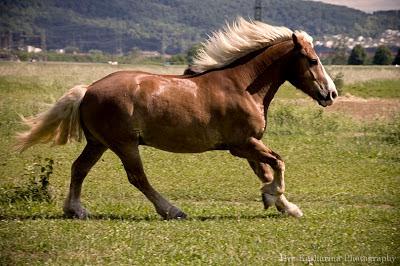
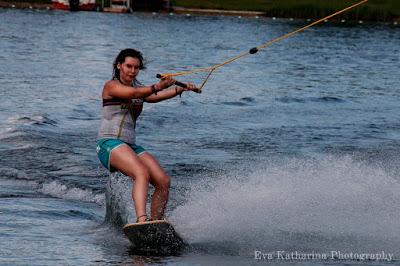
D Wann benutze ich die Zeitautomatik (AV)? AV steht für Aperture Value, also Blendenwert. Somit gebe ich bei diesem Modus ISO und Blende ein und erhalte von der Kamera die passende Belichtungszeit. Diesen Modus nutze ich immer wenn ich mit der Tiefenschärfe spielen will. Also beispielsweise bei Macrofotografien um ein möglichst scharfes Bild zu erhalten oder bei Portraits um ein Bokeh im Hintergrund zu erzeugen.
E When do I use Aperture Priority Mode (AV)? AV means Aperture Value, so you have to write in aperture and ISO and the camera will tell you the right exposure time. I always use this mode when I want to play with the acuity. For example when I do macro pictures and want a lot of depth of focus or at portrait pictures for a bokeh in the background.
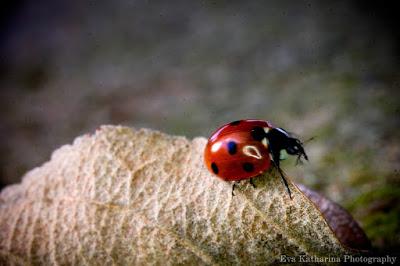
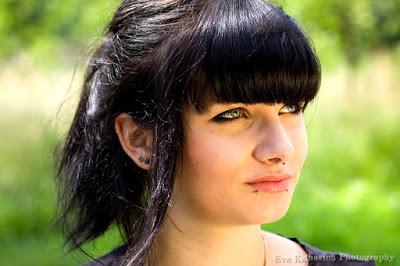
D Wann benutze ich den manuellen Modus (M)? Wenn alle anderen Modi versagen, was eigentlich nie passiert, oder wenn ich etwas mit dem Bild spielen will. Aber auch dann ermittle ich die Komponenten nicht unbedingt selbst, sondern lese erst mal in einem der anderen Modi, was die Kamera vorschlägt und ändere diesen Wert dann nach meiner Vorstellung ab. Das wir die Möglichkeit all dieser Modi haben ist ein Geschenk, kein Stempel der uns zu schlechten Fotografen macht. Wieso nicht mal etwas die Kamera arbeiten lassen? Solang wir damit die Bilder erzielen, die wir wollen, ist das meiner Meinung nach nicht verwerflich und ich wette, dass einige Profifotografen auch mal nicht manuell fotografieren.
E When do I use Manual Mode (M)? Once every other mode fails - what's nearly never - or if I want to play with the picture. And in this case I don't invent new settings, but I read them out in another mode and change them like it's in my mind. All this modes are presents and not a stamp that makes you to a bad photographer. Why shouldn't you let the camera work a little bit? Your goal is to make the pictures, like you want them, and if the camera can do that, let her! I bet, that professionals doesn't always photograph in Manual Mode, too.
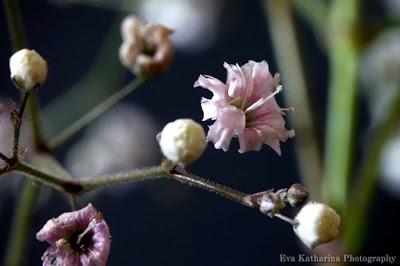
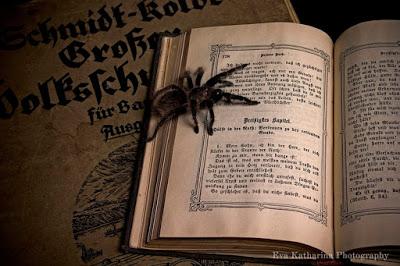
Stellt euch vor, euch läuft das perfekte Motiv über den Weg: ein wildes Tier, ein schöner Vogel, eine tolle Libelle, und ihr müsst erst mal Blende und Belichtung anpassen. Ich wette mit euch: bis ihr die perfekten Einstellungen habt, ist das Motiv schon über alle Berge.
Ich gebe zu, auf diesem Blog sind nur die wenigsten Bilder im manuellen Modus geschossen und ich stehe dazu.
E In today's post I want to eliminate a photography myth. The myth, that you can only make nice pictures in Manual Mode of your camera. "Professionals always use the Manual Mode", even if I'm not a professional, I want to tell you, that this sentence is a lie.
Imagine the perfect theme is walking right in front of you: a wild animal, a nice bird, a beautiful dragonfly, and you first have to set exposure time and aperture. I bet: once you have the right settings, your theme is long gone.
I admit that the least pictures on this blog are made in Manual Mode and I stand for that.
D Wann benutze ich die Programmautomatik (P)?
Wenn ich mit der Kamera in der Tasche unterwegs bin, steht diese immer auf P, meistens auch gleich mit passender ISO. Die ISO ist - behaupte ich - die am schnellsten und einfachsten zu bestimmende Komponente. Kurz gesagt: kleine ISO = es ist gerade hell, große ISO = es ist dunkel, Ende. Wenn nun also ein wildes Reh über den Weg läuft, muss ich nur noch die Kamera zücken, einschalten und ein Foto machen. Viel schneller ist das wohl kaum möglich.
E When do I use Program Mode (P)?
When I take my camera with me, it's always on P and usually with the suitable ISO. I claim that ISO is the easiest and fastest setting to decide. Briefly: if it's bright, use a small ISO and if it's dark, use a big one. So now if there's a deer on your way, just whip out the camera, turn it on and take a photo. I think that's pretty fast like that and you can take nice pictures.


D Wann benutze ich die Blendenautomatik (TV)?
Hier werden Belichtungszeit und ISO bestimmt und die Kamera bestimmt die Blende. Kurz zu merken: TV steht für Time Value, also den eingegebenen Verschlusszeitwert.
Diese Einstellung nutze ich wenn ich Bewegungen einfrieren oder verwischen will. Also beispielsweise bei der Sportfotografie oder wenn man ein Tier fotografieren will.
Außerdem benutze ich die Einstellung gelegentlich, wenn ich kein Stativ dabei habe und etwas Freihand fotografieren will. Da gibt es ja die schöne Faustregel mit Brennweite und Verschlusszeit. Fotografiere ich mit 200mm Brennweite, darf die Verschlusszeit höchstens 1/200 sein, ansonsten kommt es zu Verwacklungen. Also immer schön die Brennweite hinter den Bruchstrich stellen.
E When do I use Shutter Priority Mode (TV)?
In this mode you choose exposure time and ISO and the camera determines the aperture. Easy to remember: TV stands for Time Value, so you have to give the camera a value for the exposure time.
I use this mode, when I want to freeze or blur movements, e.g. when I photograph animals or you can use it for sports pictures.
I also use the mode sometimes, when I don't have a tripod with me and I want to photograph something out of hand. There is a nice rule of thumb for deciding the exposure time with the aid of your focal length. If you photograph with 200mm focal length use 1/200 or faster, otherwise there will be camera shakes. So always write your focal length behind the fraction bar.


D Wann benutze ich die Zeitautomatik (AV)? AV steht für Aperture Value, also Blendenwert. Somit gebe ich bei diesem Modus ISO und Blende ein und erhalte von der Kamera die passende Belichtungszeit. Diesen Modus nutze ich immer wenn ich mit der Tiefenschärfe spielen will. Also beispielsweise bei Macrofotografien um ein möglichst scharfes Bild zu erhalten oder bei Portraits um ein Bokeh im Hintergrund zu erzeugen.
E When do I use Aperture Priority Mode (AV)? AV means Aperture Value, so you have to write in aperture and ISO and the camera will tell you the right exposure time. I always use this mode when I want to play with the acuity. For example when I do macro pictures and want a lot of depth of focus or at portrait pictures for a bokeh in the background.


D Wann benutze ich den manuellen Modus (M)? Wenn alle anderen Modi versagen, was eigentlich nie passiert, oder wenn ich etwas mit dem Bild spielen will. Aber auch dann ermittle ich die Komponenten nicht unbedingt selbst, sondern lese erst mal in einem der anderen Modi, was die Kamera vorschlägt und ändere diesen Wert dann nach meiner Vorstellung ab. Das wir die Möglichkeit all dieser Modi haben ist ein Geschenk, kein Stempel der uns zu schlechten Fotografen macht. Wieso nicht mal etwas die Kamera arbeiten lassen? Solang wir damit die Bilder erzielen, die wir wollen, ist das meiner Meinung nach nicht verwerflich und ich wette, dass einige Profifotografen auch mal nicht manuell fotografieren.
E When do I use Manual Mode (M)? Once every other mode fails - what's nearly never - or if I want to play with the picture. And in this case I don't invent new settings, but I read them out in another mode and change them like it's in my mind. All this modes are presents and not a stamp that makes you to a bad photographer. Why shouldn't you let the camera work a little bit? Your goal is to make the pictures, like you want them, and if the camera can do that, let her! I bet, that professionals doesn't always photograph in Manual Mode, too.



